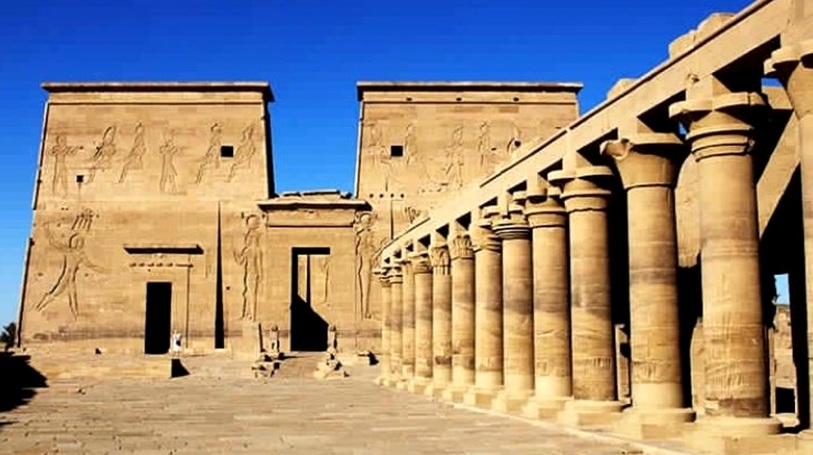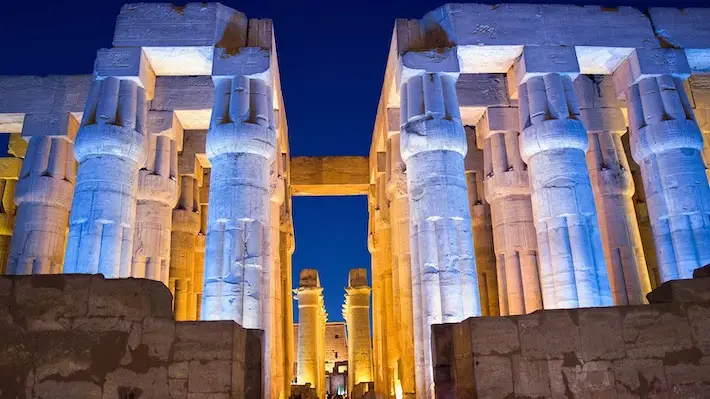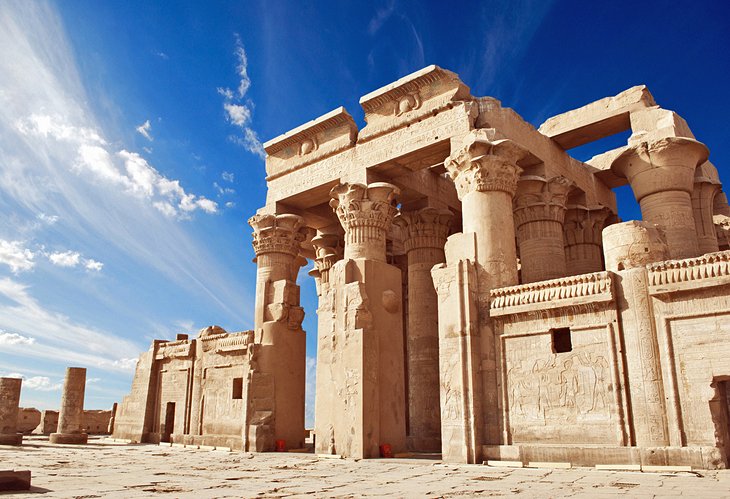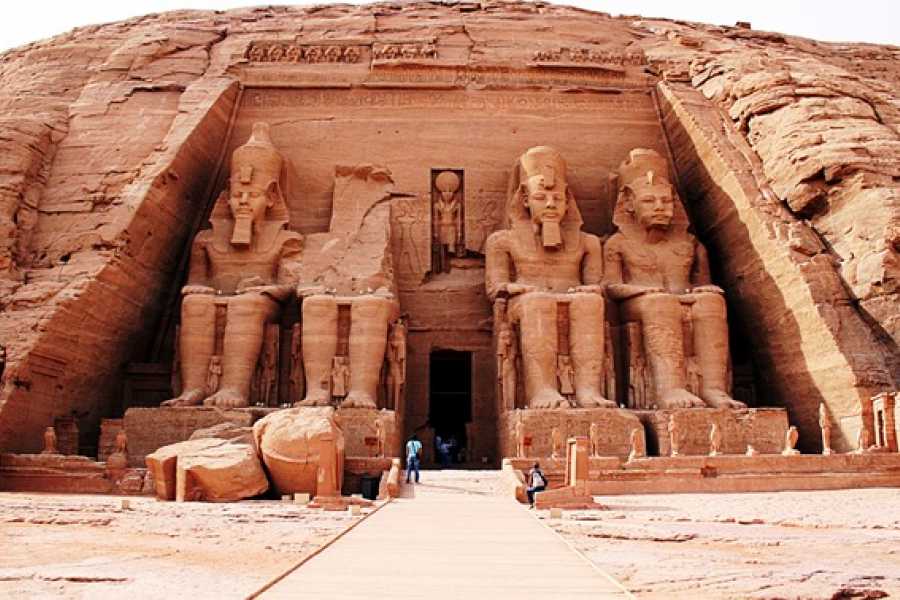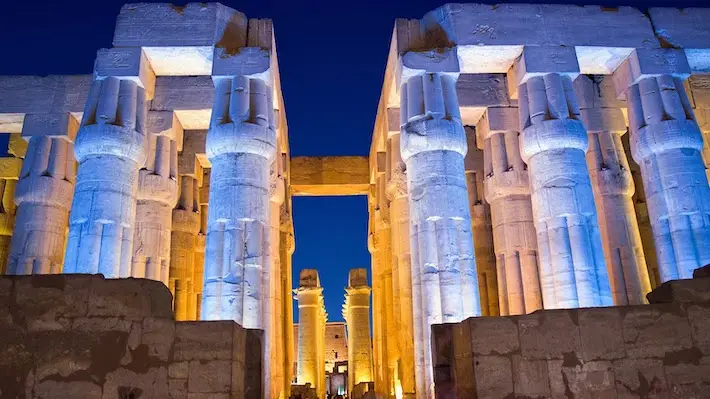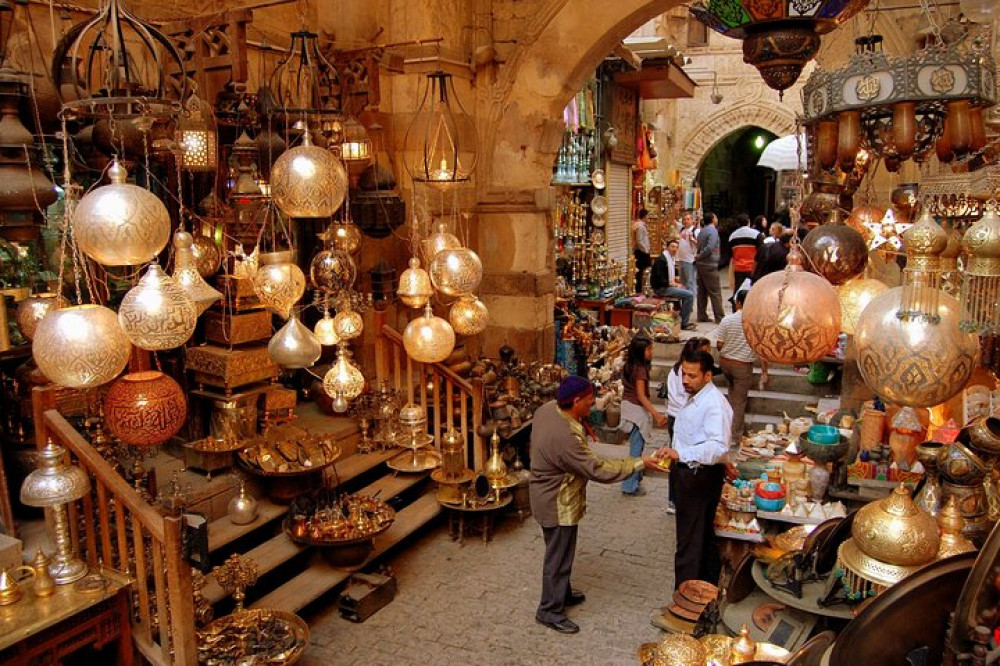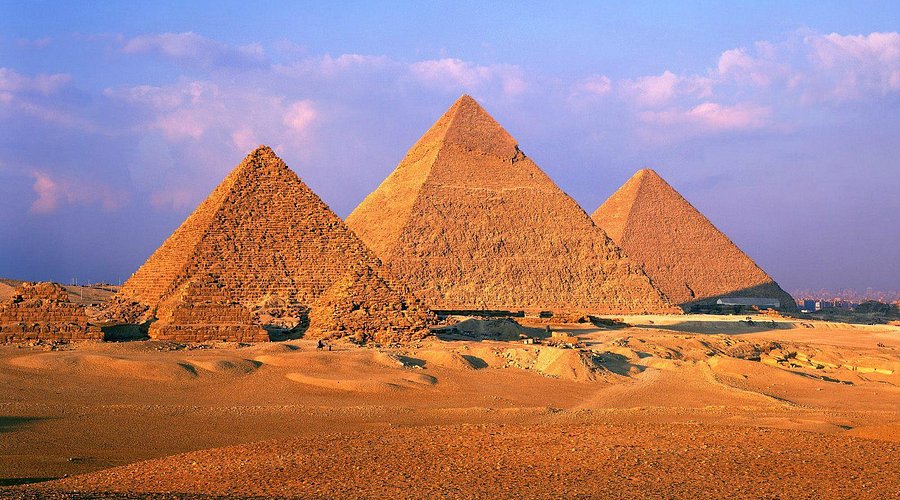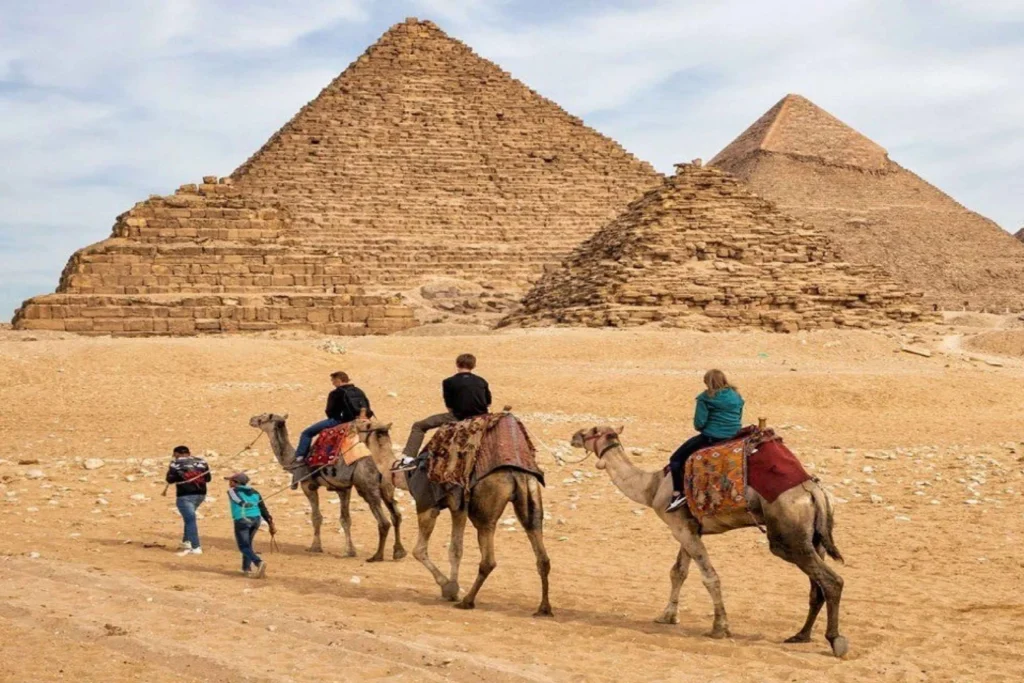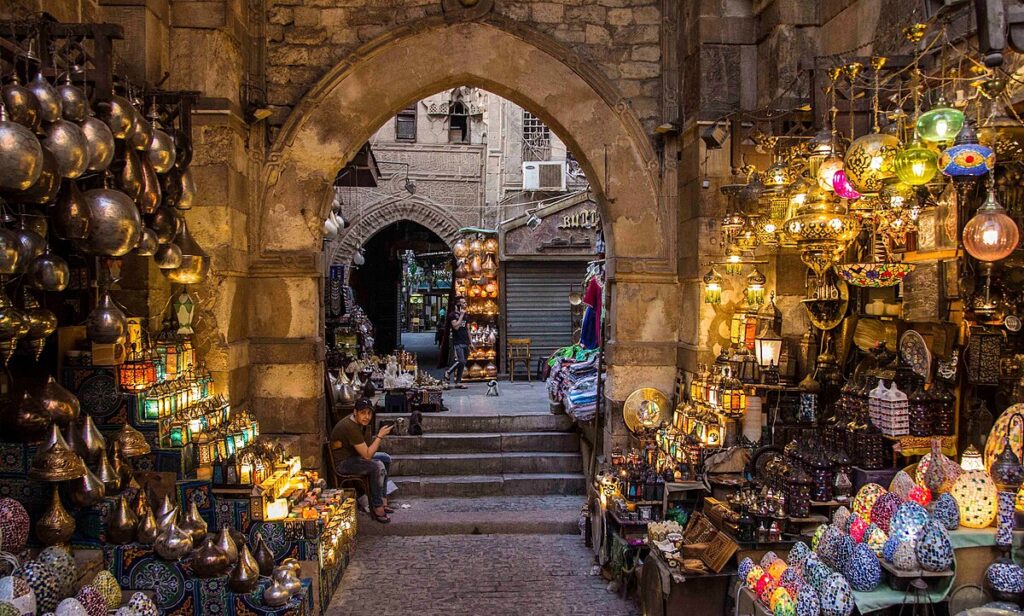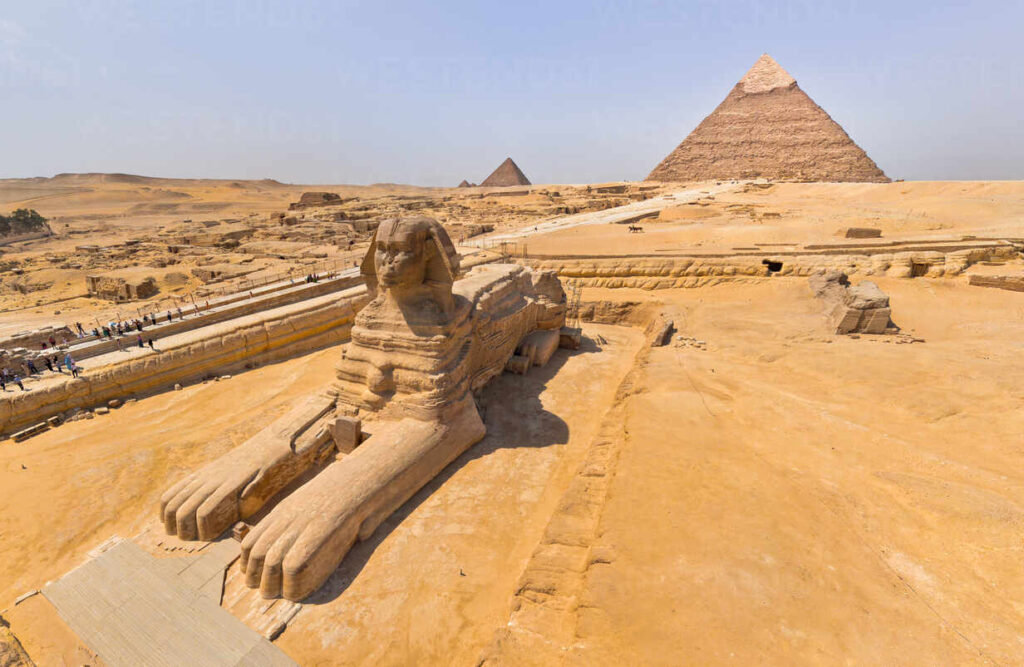Nine days Egypt tour will be a magical adventure of the ages where the legacy of the ancient Egyptian Civilization will be uncovered. The excellent travel agency Egypt Tours Portal will provide all our guests with the most outstanding services of a private A/C Vehicle, comfortable accommodations, and a proficient Egyptologist tour guide which is anticipated from the best travel agency in Egypt. All our clients will live the most epic adventure in this amazing 9 days historical trip in Egypt which will take everyone on an amazing journey through the history of ancient Egypt to all the different time periods and destinations while enjoying the finest service at the most affordable prices. Everyone will experience Egypt in 9 days and witness genuine beauty and wonder in the face of immortality in the enchanting cities of Cairo, Luxor, Aswan & Alexandria which are able to showcase the culture and artistic brilliance of the Giza Pyramids, Saqqara Step Pyramid, Qaitbay Citadel, Alexandria Library, Catacombs of Alexandria, Khan El-Khalili bazaar, The Hanging Church, the National Museum of Egyptian civilization, Luxor Temple, Karnak temple, Queen Hatshepsut Temple, Valley of the Kings, Philae Temple, Abu Simbel temple, and more. Use your time wisely and explore all the heavenly wonders of Egypt by booking this magical tour.
Itinerary
Your vacation begins upon arrival at Cairo Airport, where an "Egypt Tours Portal" representative will assist you with passport control, luggage, and customs. You'll then be transferred by private air-conditioned vehicle to your 5-star hotel for check-in. In the evening, you'll enjoy a dinner cruise on the Nile, featuring belly dancing, a folklore show, and a Tannoura (whirling dervish) performance. You'll then return to your hotel for the night.
After breakfast and checking out of your Cairo hotel, you'll visit the Giza Plateau:
- Giza Pyramids Complex:
- The Great Pyramid of Khufu: Built around 2570 BC, this pyramid was the tallest man-made structure for over 4,000 years and remains the only surviving wonder of the ancient world.
- The Great Sphinx: This iconic statue, with the body of a lion and the face of King Khafre, guards the Giza plateau.
- The Valley Temple: This well-preserved temple was used for mummification rituals.
- The Grand Egyptian Museum: Explore a vast collection of artifacts, including:
- The Hanging Obelisk
- King Ramses II Statue
- The 10 Statues of King Senusert
- The Grand Staircase
- Statues of Ptolemaic Kings and Queens
- The Victory Column of King Mercnptah
- The Royal Regalia
- The Grand Atrium & Gift Shop (VIP tickets for access to additional artifacts are available upon request.)
After lunch, you'll continue your tour with visits to:
- Memphis City: The ancient capital of Egypt, founded by King Menes Narmer around 2925 BC, and a center of worship for the god Ptah. The name "Egypt" is derived from the temple name "Hut-Ka-Ptah."
- Saqqara Step Pyramid: Designed by Imhotep for Pharaoh Djoser, this six-tiered pyramid marks the beginning of pyramid construction in ancient Egypt.
Finally, you'll be transferred to Cairo Airport for your flight to Aswan and check in to a 5-star hotel for the night.
After breakfast at your Aswan hotel, you'll explore some of the city's top attractions:
- The High Dam: This modern engineering marvel, built between 1960 and 1970 with Soviet assistance, was designed to control Nile flooding, generate hydroelectric power, and increase water storage for irrigation. It's important to note that its construction necessitated the relocation of Abu Simbel and Philae temples.
- The Unfinished Obelisk: Commissioned by Queen Hatshepsut (1508-1458 BC) for the Karnak Temple, this obelisk, known as "Tekhenu" ("to pierce the sky"), reveals ancient Egyptian obelisk-making techniques. It would have been 42 meters tall and weighed 1200 tons, but it cracked during construction and was abandoned.
After lunch with your tour guide, you'll visit:
- Philae Temple: Located on Agilkia Island (after being relocated by UNESCO in the 1960s), this temple is associated with the myth of Osiris, who was killed by his brother Set and later resurrected to rule the underworld. His son Horus then defeated Set, ushering in an age of prosperity.
You'll then return to your hotel in Aswan for the night.
Early in the morning, you'll receive breakfast boxes, check out of your Aswan hotel, and drive southwest (approximately 300 km) with your tour guide to:
- Abu Simbel Temples: This landmark, established by Ramses II (1279-1213 BCE) as the "Temple of Ramesses, beloved by Amun," consists of two temples. The larger temple is dedicated to Ramses II and features a sun festival on February 22nd and October 22nd each year, when sunlight illuminates the faces of statues of Ramses II, Ptah (God of creation), Amun (The Creator God), and Ra (Sun God). The smaller temple is dedicated to his wife, Queen Nefertari. These temples were the focus of a major UNESCO rescue operation in the mid-1960s.
After the tour, you'll return to Aswan for lunch. Then, you'll board a train to Luxor, where you'll check in to a 5-star hotel for the night.
On day five, after breakfast at your Luxor hotel, you'll explore the East Bank:
- Karnak Temple: Known as "Ipet-isu" (The Most Selected of Places) and "Pr-Imn" (House of Amon), this vast temple complex, built over 4,000 years, was the central place of worship for the ancient Egyptian civilization for over 1,500 years. While dedicated to many deities like Osiris, Montu, Ptah, and Isis, its primary focus was the Theban Triad: Amun, Mut (Goddess of Justice), and Khonsu (Moon God).
After lunch at a Luxor restaurant and some time to refresh at your hotel, you'll visit:
- Luxor Temple by Night: Illuminated at night, Luxor Temple, built around 1400 BCE by Pharaoh Amenhotep III (then known as "Ipetresyet," meaning "the southern sanctuary"), is a stunning sight. Dedicated to Amun of the Theban Triad and representing the rejuvenation of kingship, the temple boasts intricate decorations and impressive architecture.
You'll then return to your hotel for the overnight.
After breakfast and hotel checkout in Luxor, you'll continue exploring the West Bank:
- Hatshepsut Temple: Also known as Djoser-Djeseru ("Holy of Holies"), this temple is a testament to the reign of Queen Hatshepsut, one of ancient Egypt's most successful rulers. Built in 1479 BC during the New Kingdom and taking 15 years to complete, its design reflects the Classical Architecture of the era and houses captivating artifacts and statues.
- Valley of the Kings: This sacred burial site for New Kingdom pharaohs and queens (1570-1070 BC) contains 63 tombs filled with treasures, artifacts, statues, and decorations. Notable pharaohs buried here include Ramses (I, II, III, IV, V, VI, VII, IX, X), Amenhotep I, Hatshepsut, and Tutankhamun. The Valley of the Kings is a UNESCO World Heritage Site (since 1979).
After lunch, you'll visit:
- Colossi of Memnon: These two massive quartzite sandstone statues, each 18 meters (60 ft) tall and weighing 720 tons, depict Pharaoh Amenhotep III (1386-1350 BC). Damaged by an earthquake in 27 BC and later restored in 199 AD, the statues were famous during the Greco-Roman period for the "Vocal Memnon" phenomenon—a sound caused by wind passing through the damaged statues.
You'll then return to your Luxor hotel for the night.
On day seven, after breakfast and checkout from your Luxor hotel, you'll fly to Cairo and explore some of its key attractions:
- The Egyptian Museum: This museum houses a vast collection of ancient Egyptian artifacts spanning over 4,000 years, including statues, jewelry, and funerary objects made from various materials like gold, precious gems, wood, and stone.
After lunch, you'll continue your Cairo tour:
- The Hanging Church (St. Mary's Church): A significant Coptic site built in the 5th century AD on the southern wall of the Roman Babylon Fortress. It served as the Coptic patriarch's residence for many years and features architectural elements from the 7th to 13th centuries.
- Amr Ibn Al Aas Mosque: This is considered the most important mosque in Egypt and Africa, built in 641 AD. It remains an active place of worship and a significant Islamic landmark, having been reconstructed several times over the centuries, showcasing the evolution of Islamic architecture.
- Ben Ezra Synagogue: Dating back to the 19th century (originally a church converted in 882 AD), this synagogue is well-preserved and features impressive Jewish designs and decorations. It served as a major center of Jewish worship until the 1950s.
- The National Museum of Egyptian Civilization (NMEC): This museum showcases Egypt's rich tangible and intangible cultural heritage through artifacts and monuments spanning over 4,000 years.
- Al Muizz Street: This historic street, developed during the Fatimid period in the 10th century AD, is known for its Islamic architecture, house museums, and cafes.
- Khan El Khalili Bazaar: This historic bazaar, established in 970 AD, remains a vibrant marketplace with shops and cafes reflecting the charm of ancient Islamic times. It's known for its Islamic architecture and decorations.
You'll then return to your Cairo hotel for the night.
On day eight, after breakfast, you'll travel to Alexandria to explore its key attractions:
- Catacombs of Kom El Shoqafa: This unique archaeological site is a necropolis built in the 2nd century AD. It showcases a blend of Hellenistic, Roman, and ancient Egyptian artistic styles and contains Greek and Roman artifacts and decorations across its three levels. It was once considered one of the Seven Wonders of the Middle Ages.
- Pompey's Pillar: This impressive Roman monument is the largest monolithic column built outside of Rome. It stands 28 meters tall and 2.7 meters wide, made of red granite. A Greek inscription dedicated to Emperor Diocletian is found on its western upper side. The name "Pompey's Pillar" originated in the Middle Ages when Crusaders mistakenly believed it contained the remains of the Roman general Pompey.
After lunch at a local Alexandrian restaurant, you'll visit:
- Qaitbay Citadel: This important Islamic landmark was built in 1477 by Sultan Al-Ashraf Sayf Al-Din Qa'it Bay on the site of the ancient Lighthouse of Alexandria, using salvaged stones from the lighthouse itself. The original lighthouse, one of the Seven Wonders of the Ancient World, was destroyed by earthquakes between 956 AD and 1323 AD.
- Alexandria Library (Bibliotheca Alexandrina): This modern library commemorates the ancient Library of Alexandria and is one of the world's most advanced libraries. It houses the world's sixth-largest Francophone library, with books in Arabic, English, and French. It also contains the largest collection of French books in North Africa and the Middle East, along with art galleries and rare book collections.
You'll then return to Cairo for the overnight.

